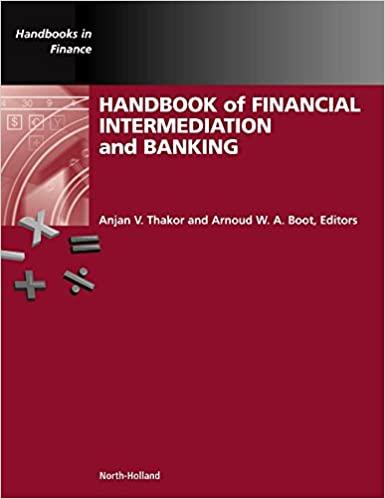Question
a) The average returns of a 5-year period risk-free rate and market rate are 7 percent and 13 percent respectively. During that period, four portfolio
a) The average returns of a 5-year period risk-free rate and market rate are 7 percent and 13 percent respectively. During that period, four portfolio managers have reported the following investment results:
| Portfolio Manager | Average return (%) | Beta |
| X | 10 | 0.70 |
| Y | 13 | 1.05 |
| V | 16 | 1.30 |
| W | 14 | 0.90 |
1) Using the CAPM concept, calculate the expected rate of return for each portfolio manager and compare the actual returns with the expected returns.
2) Justify which manager has the best performance?
3) CAPM assumes homogenous expectations and perfect capital markets. Discuss the implications of relaxing these assumptions.
b) Below shows the US$ monthly returns of portfolio investment in various countries by your company:
|
| Country | Risk-free return | Average Return | Standard | Beta |
|
|
| (%) | (%) | Deviation (%) |
|
|
| Singapore | 0.40 | 0.90 | 6.00 | 1.00 |
|
| Hong Kong | 0.40 | 1.25 | 6.75 | 1.20 |
|
| Japan | 0.40 | 0.75 | 4.50 | 0.90 |
|
| China | 0.40 | 1.45 | 6.80 | 1.35 |
|
| United States | 0.40 | 1.00 | 5.50 | 0.95 |
1) Calculate and rank the country portfolios by Treynor Measure
2) Calculate and rank the country portfolios by Sharpe Measure
3) Being a financial controller who is able to determine a global beta for your companys portfolio and holds a portfolio that is well-diversified with international investments, which performance measure is more appropriate, the Sharpe Measure or the Treynor Measure? Explain why.
Step by Step Solution
There are 3 Steps involved in it
Step: 1

Get Instant Access to Expert-Tailored Solutions
See step-by-step solutions with expert insights and AI powered tools for academic success
Step: 2

Step: 3

Ace Your Homework with AI
Get the answers you need in no time with our AI-driven, step-by-step assistance
Get Started


